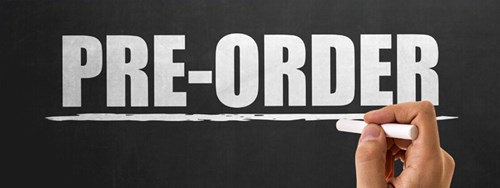13 Ways to Calculate Market Demand & Choose the Right Products

It’s not wise to introduce a lot of products without evaluating their market demand. You need to avoid the burden of unsold products by adopting a futuristic approach during product selection. Yes, you can never forecast the future, but you can get as close as possible. You might be thinking about analyzing the current trends and determining the market demand precisely. Even that will not give you accurate results. That’s why an all-out effort is necessary, involving all available resources, to calculate the market demand and find products that will sell as per expectations. We described the best practices of calculating market demand throughout this article. Read on to know more.
How to Calculate Market Demand for Your Products

Market demand indicates the demand and usability of a product to its consumers. You’ll understand how much your customers want to have a product within a specific time period by measuring its market demand. This demand depends on a few variables, and it can even fluctuate over time. Before investing in a venture, make sure you use enterprise ecommerce solutions for seamless business operations. Let’s learn how to evaluate market demand for the products you will be selling.
1. Use Effective Tools

Free tools like Google Trends, Google Keyword Planner can run extra miles to help you trending currently and if the demand is significant enough and worthy of yielding profits against your investments. Run a search on Google Trend with the keyword relevant to your product ideas. It will provide you with search volumes of the past few years of those particular keywords. Thus, you will understand the demand curve and easily determine if the demand will remain the same or have a spike or decline.
Search the same keywords in Google Keyword Planner. Google will present you with relevant results and new ideas associated with each keyword's search volume and keyword competition. These data will let you act upon facts and figures, avoiding dependency on a hunch and guesswork. These tools also provide the demographics of the people who made the search queries. Thus, you’ll get an overview of the whole scenery related to the market demand for your products.
2. Exploit Social Listening Tools

With the advancement of technology, customer data are readily available at your fingertips. You can access these data using different third parties. Though it sounds quite unethical, these third-party apps seek necessary permission before the installation process. Social media chats about industries, brands, products are usually tracked using artificial intelligence. Different analytics are there to segment data according to the geographic location, filtered conversations, keywords, price points, and more. You can get data from these social listening tools to accurately determine the market demand for your products.
3. Experiment with Tricky Campaigns

Sometimes, you need to get tricky to succeed in business. Google Adwords can help you in this regard. For example, you can run an ad about an upcoming product you want to sell. Check the response from prospective customers. If you find it feasible to introduce those products and make significant profits, move to the next step of sourcing them. Thus, you will know how many people are interested enough to come all the way to your sales page.
4. Take Pre-orders If Possible

This is the safest method of running a risk-free business. It is better to take advanced payment for the products before shipping them to the customers. But, that may raise serious trust issues. You can go liberally by taking partial payment beforehand so that no one cancels an order midway. Getting preorders isn't a piece of cake. You have to run competent marketing campaigns to create a buzz surrounding your products and offer something really special.
5. Use SEO Tools

There are several SEO tools to help business owners understand the overall demand for a product. It would be best if you used paid tools to reap the best benefits of these tools. Basic keyword research is possible with free tools and Google’s default search bar. Add a free SEO extension to your browser. Then, put your keywords in the search field and press enter. You will find relevant results with important information like page authority, domain authority, search volume, etc. Measure your competition by analyzing the search results. You will get ideas about your competitors and your products' market demand by using SEO tools like Keyword Surfer.
6. Value Customers’ Intention

If you ever conducted any customer research, you already know people don't always say what they mean. Many people say that they’re interested in buying a particular product, but they end up doing something else. You can’t control their intent. At the same time, you are left with no choice but to measure the demand based on their behavior and response. Whatever the background of your market research is, trust the customer's intention and act accordingly. If your data show, customers have buying intent, believe it without questioning their integrity.
7. Offer Something More

Products aren't all about their quality. They involve packaging, customer service, shipment process, and most importantly, price points. Try to design an attractive package comprising all these attributes so that you can create or increase market demand for your products. You will get acceptance from your audience if you can successfully maintain this consistently. This is also important to create brand awareness and maintain brand consistency.
8. Consider the Location

This stage is very critical. If a product has high demand in New York, but you operate a London business, that will not benefit you that much. Figure out the trends and demands relevant to only the locations where you can sell your products. So, one of the first things to do before conducting market research is to validate the locations.
How to Choose Product Ideas for Your Business

Select Problem-solving Products: Why do people buy things? To meet their demands or solve a problem mainly. If you can make people believe that your products are an essential part of their life, they’re more likely to buy them. Reflect on the crisis and problems of your life; you’ll find amazing product ideas as solutions to your problems. So, select products that solve customers’ problems and meet their needs.
Find Products That Have Emotional Value: You’re more likely to succeed in a business if you sell something that aligns with your passion. And the people who will be buying for you also should have some emotional attachment with your products. If you can't build a passionate relationship with your products, it will become difficult to provide your customers' best value.
Choose Marketing-Friendly Products: Select products that will facilitate your branding and marketing efforts. It’s very difficult to run marketing campaigns if you sell something devoid of marketing elements, customer engagement, and easy-to-flaunt selling points. Choose products that have a specific segment of customers and resonate well with their interests.
Identify Trends Early: No trend is permanent. A typical trend reaches its peak at some point then starts to have a downturn. If you can identify trends before seeing a great spike, you have high chances to take advantage of the peak time. The earlier you can predict a trend, the more you can generate sales.
Stick to a Specific Niche: When you target a broader audience, it becomes harder to develop effective marketing and promotional strategies because of the complexities and varieties of buyer personas. We recommend starting with a small segment of customers to bring out the best results regarding conversions and revenues. Besides, choosing a niche is important for achieving good SEO scores, driving more traffic to your website, and increasing sales.
Identifying market demand is a must before product sourcing. You can avoid purchasing too little or too much inventory by predicting the number of sales. That's only possible if you can measure market demand accurately and choose the right products as per the demand. The above steps will guide you to the right ways of calculating marketing demand and finding profitable product ideas. For an e-commerce platform that allows easy product management, choose Okommerce, an enterprise eCommerce platform designed to serve large-scale enterprises' needs. If you are looking for a reliable, secure, and budget-friendly ecommerce platform, get Okommerce today.




